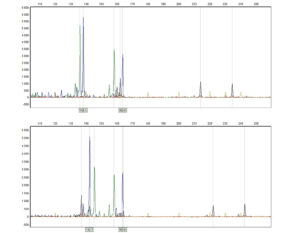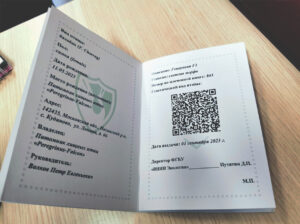Third International Scientific and Practical Conference “Eagles of the Palearctic: Study and Conservation”
Raptors Conservation. Suppl. 2. Proceedings of Conferences
Genetic Passport System for Captive Falcons – Saker, Gyrfalcon and Peregrine Falcon Conservation Prospects in Russia
Zinevich L.S. (All-Russian Research Institute for Environmental Protection, Moscow, Russia)
Rozhkova D.N. (Koltzov Institute of Developmental Biology Russian Academy of Sciences, All-Russian Research Institute for Environmental Protection, Moscow, Russia)
Iljin M.I., Sorokin A.G. (All-Russian Research Institute for Environmental Protection, Moscow, Russia)
Contact:
Lyudmila Zinevich lzinevich@gmail.com
Darya Rozhkova darroznature@gmail.com
Mikhail Iljin mixailsurikov@gmail.com
Alexander Sorokin agsorokin@mail.ru
Recommended citation: Zinevich L.S., Rozhkova D.N., Iljin M.I., Sorokin A.G. Genetic Passport System for Captive Falcons – Saker, Gyrfalcon and Peregrine Falcon Conservation Prospects in Russia. – Raptors Conservation. 2023. S2: 477–481. DOI: 10.19074/1814-8654-2023-2-477-481 URL: http://rrrcn.ru/en/archives/35244
DNA analysis is a “gold standard” for individual identification and parentage studies as for humans, so for animals (Saks et al., 1991). First forensic testing of the rare animal species DNA occurred in 1991 in Great Britain, when the case of illegal capture of the Peregrine Falcon (Falco peregrinus) chicks was proved by parentage testing using DNA fingerprints of birds in question and other peregrines in captivity (Shorrock, 1998). In Russia, illegal capture for foreign sales is the main threat for Saker (Falco cherrug) and Gyrfalcon (Falco rusticolus) (Kovács et al., 2014, Lobkov et al., 2020). In 2021, a Comprehensive action plan for creation of Reintroduction and conservation centres for falcons in the Kamchatka region and bustards in the Republic of Kalmykia was signed into law by the Vice-Prime Minister V. Abramchenko. While this statute is primarily addressed to falcon species reproduction and reintroduction, some action items there are coming from falcon species conservation to prevent illegal trade: investigating the orders of marking birds in captivity and tracing them individually from hatching to selling and transferring abroad. Genetic methods were supposed to be the heart of the orders.
Accuracy of any DNA identification highly depends on genetic markers used for it. Usually, for humans and farm animals, individual identification and paternity testing are based on nuclear microsatellites (short tandem repeats) panels.
These markers are codominant, multiallelic, hypervariable and allow running analyses quickly and automatically. Some studies have already shown their possibilities in forensic DNA testing of falcons (Beasley et al., 2021).
We tested different microsatellite panels for genetic identification of Sakers, Gyrfalcons and Peregrines and established a simple and cheap protocol for falcon genotyping using 10 microsatellite loci primarily described for saker natural populations (Hou et al., 2018). Using a first dataset contained of 99 samples (85 Sakers, 12 Gyrfalcons and two hybids), we showed the possibility to estimate the significance of genotyping for these loci and obtained values of probability of identity (PI) less than 10-9 in total and less than 10-3 for siblings. Whereas total population number both for the Saker and Gyrfalcon over the area is estimated by the IUCN in less than 106individuals, and the offspring of one bird pair can hardly amount to much more than a hundred, the probability of accidental appearance of two birds with same genotypes for these loci may be regarded as negligible. The accuracy of parentage testing was also shown to be sufficient as for the pair and their offspring, so for one parent and the offspring. The microsatellite panel showed specificity for Peregrines, but more investigation is needed to check if these loci are fully convenient also for Peregrine Falcon identification.
Basing on these preliminary results we used this test system starting a voluntary programme of breeding stock genotyping for Russian falconries. To the date, five falconries have already provided genetic material and supporting data for their breeding stock, about 380 samples from Sakers, Gyrfalcons, Peregrines and their hybrids. Together with data from natural populations (about 300 samples including museum specimens), this dataset provides opportunities to perform species and population analysis even though our preliminary results like previous data (Nittinger et al., 2007) showed low sensitivity of microsatellites to distinguish Sakers from Gyrfalcons without supporting geographic data.
For falconries, full analysis of genetic data, analysis of paternity etc. provided a probability to check the breeding stock and breeding programs and exclude occasional mistakes in identification even for old cases. But the main aim of the program is to obtain a unique genetic identifier for each bird and its offspring to show the legitimacy of rare species keeping. While our microsatellite panel showed genotype uniqueness like CODIS (Budowle et al., 2016) and other forensic test systems for human identification, we propose it as a base of the genetic passport of falcon which can be put into a pedigree sertificate as a plain text or a QR-code. For such purposes, the method should be fully reproducible using any equipment at any laboratory. Together with Russian companies specialized in forensic DNA test systems manufacturing, we plan to develop a ready-to-use kit for genetic passportization of sakers and gyrfalcons in captivity and forensic DNA testing in case these rare species illegal outtake from nature or trafficking is suspected.

Comparative capillary electrophoresis of five STR loci multiplex PCR products for two different Saker (Falco cherrug) samples.

